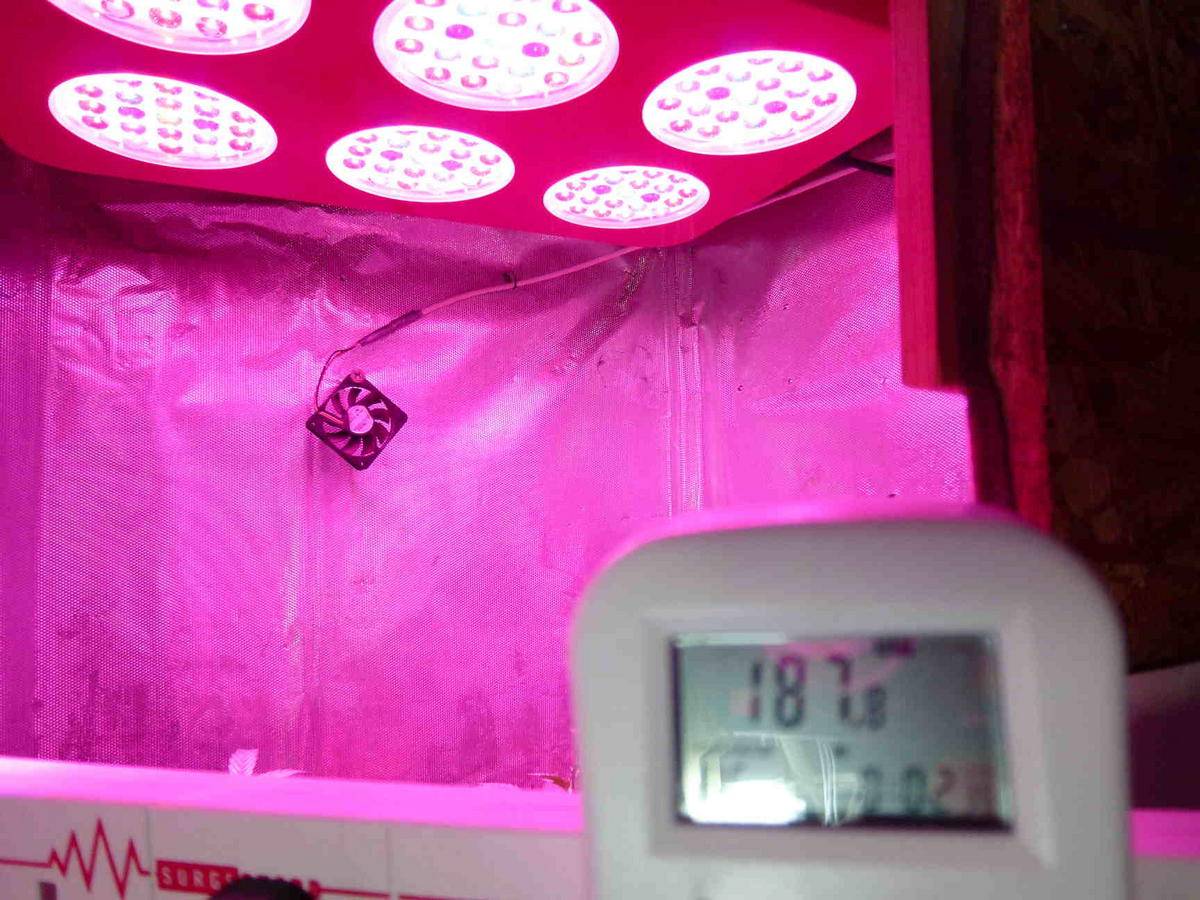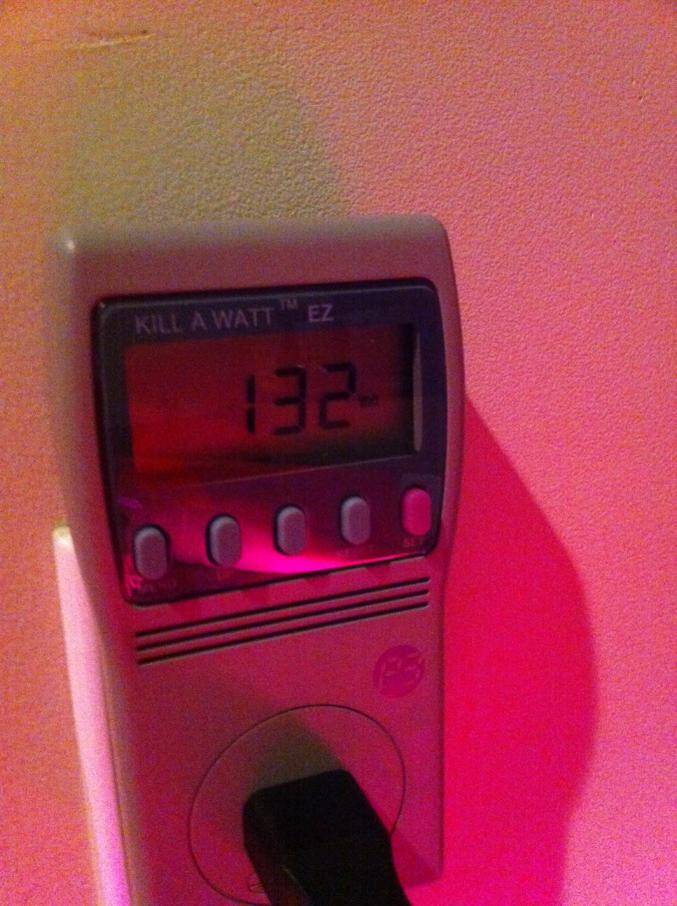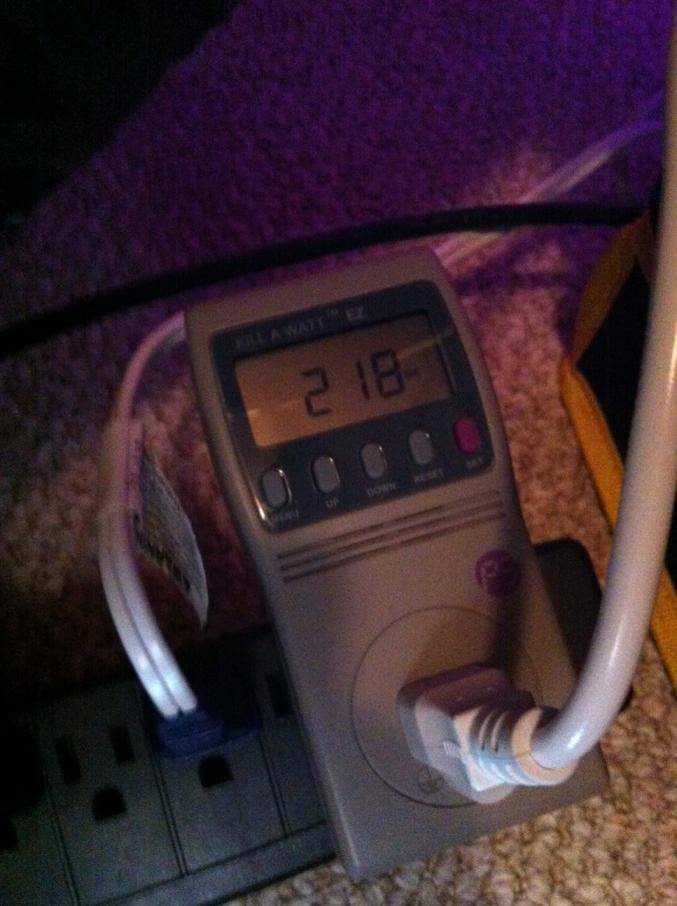-
Happy Birthday ICMag! Been 20 years since Gypsy Nirvana created the forum! We are celebrating with a 4/20 Giveaway and by launching a new Patreon tier called "420club". You can read more here.
-
Important notice: ICMag's T.O.U. has been updated. Please review it here. For your convenience, it is also available in the main forum menu, under 'Quick Links"!
You are using an out of date browser. It may not display this or other websites correctly.
You should upgrade or use an alternative browser.
You should upgrade or use an alternative browser.
LED Mythbusting, KILL A WATT proof
- Thread starter GP73LPC
- Start date
this is an HGL 126X2-PRO lamp, 187 watts. the X2 just refers to the X lens technology so the power consumption would be the same for the 126X-PRO and also probably the 126 penetrator pro too

VG
VG
So with those of you who have bought and actually use these led lights, which would you recommend to replace a 600watt setup with? Or better yet, knowing what you know NOW would you just suggest sticking with hps/mh spectrums?
this is an HGL 126X2-PRO lamp, 187 watts. the X2 just refers to the X lens technology so the power consumption would be the same for the 126X-PRO and also probably the 126 penetrator pro too

VG
thanks so much VG...

i will update my charts in the LED Retailers thread too....
So with those of you who have bought and actually use these led lights, which would you recommend to replace a 600watt setup with? Or better yet, knowing what you know NOW would you just suggest sticking with hps/mh spectrums?
there are people here with more experience than i... i mostly have just gathered info for people to see easily compiled in one place.
i do a veggie herb garden with LED's...
check out the link in my sig called LEDs over 1+ LB and LED results: grams per watt. lots of info in those two...
imo, lumigrow, evo, welthink, powerled and advancedleds are among the best...
the over 1LB thread should give you an idea on how much is needed to replace a 600... but i would say at least 400-450 watts of LEDs...
indianajones
Member
well i let a friend borrow my kill a watt and never got it back
but the 2011 v2 lights from GLH that are supposed to be 180W only draw 161.
but the 2011 v2 lights from GLH that are supposed to be 180W only draw 161.
This thread is great. Many thanks to GP73LPC and everyone who has submitted pictures and readings.
-Funk

how about some more?
these were pointed out in my Retailer info thread if you want the link. i'll just post the pics here...
blackstar 240 watt, really 133...
and the GLH 240W, putting out what it claims !!!
thanks to oneshot for these photos...
GP73LPC, here are Kill-A-Watt pictures for you. I think we may have a new winner for $/watt.
Blackstar 240 - 133-135w

$295
e.Shine 126x3w - 213-221w

$290
I am very satisfied.
Hi all,
I was wondering if the consumed watts are important, meaning if (and how) the light output depends on the consumed power.
The reason I'm wondering is because LED drivers are built to supply a certain current to the LED. This current can be achieved at different voltage on the diode, depending on its condition, that's why the driver regulates the voltage. The amount of light emitted depends on the current through the diode and not the voltage applied. A diode is rated to emit X lumens at Y ampers. The consumed power depends on the resistance of the diode and, I guess, the resistance is mostly affected by temperature.
So, at different temperatures the diode will consume different amounts of power to output the same amount of light. The rated power consumption of a diode is perhaps the maximal possible within the rated temperature range.
Judging the amount of emitted light by the consumed power becomes even more complicated by the fact that the relation between the current and the emitted light is not linear (a simple experiment http://led.linear1.org/how-is-led-brightness-related-to-current/1/).
Something rated at 250W but consuming only 150W can hardly be explained by this, but anyways it's interesting to measure the consumed power at different room temperatures and with the fans on/off
I was wondering if the consumed watts are important, meaning if (and how) the light output depends on the consumed power.
The reason I'm wondering is because LED drivers are built to supply a certain current to the LED. This current can be achieved at different voltage on the diode, depending on its condition, that's why the driver regulates the voltage. The amount of light emitted depends on the current through the diode and not the voltage applied. A diode is rated to emit X lumens at Y ampers. The consumed power depends on the resistance of the diode and, I guess, the resistance is mostly affected by temperature.
So, at different temperatures the diode will consume different amounts of power to output the same amount of light. The rated power consumption of a diode is perhaps the maximal possible within the rated temperature range.
Judging the amount of emitted light by the consumed power becomes even more complicated by the fact that the relation between the current and the emitted light is not linear (a simple experiment http://led.linear1.org/how-is-led-brightness-related-to-current/1/).
Something rated at 250W but consuming only 150W can hardly be explained by this, but anyways it's interesting to measure the consumed power at different room temperatures and with the fans on/off
I'm not an electrical engineer nor lighting expert, but this thread confuses me. Aren't we talking different values here? Like draw is one thing but light output is what we're looking for? The Cree LEDs used in a Blackstar supposedly use 85% less power (more advertising BS obviously). The Blackstar 240W only DRAWS about 133w whereas the GLH draws 245W, but since the GLH has 6 fans shouldn't it be more? It seems to me that using a light meter under the light would tell you how bright it is and the lower draw numbers are actually a good thing and indicate efficiency.
I'm not an electrical engineer nor lighting expert, but this thread confuses me. Aren't we talking different values here? Like draw is one thing but light output is what we're looking for? The Cree LEDs used in a Blackstar supposedly use 85% less power (more advertising BS obviously). The Blackstar 240W only DRAWS about 133w whereas the GLH draws 245W, but since the GLH has 6 fans shouldn't it be more? It seems to me that using a light meter under the light would tell you how bright it is and the lower draw numbers are actually a good thing and indicate efficiency.
Measuring the light output of LEDs takes specialized, very expensive equipment. Commonly available meters are typically for photography, and thus are weighted toward the portion of the spectrum that is visible to humans and not utilized by plants. Instrumentation for measuring PAR light is available, but starts at about $300, and even these will not accurately measure light in the 660nm range.
The fans used in these units are typically very low wattage, and impact the total figures less than you would think. Lower draw numbers do not indicate higher levels of efficiency, but instead are typically indicative of components that are pushed well below their potential because of inadequate cooling. The fact that many advertisers are basing the model names on the supposed wattage of the fixtures, and then building them to use only a fraction of that power is the equivalent of buying a 100 watt light bulb and only getting 50 watts worth of light out of it.
Measuring the power draw isn't the ultimate analysis tool, but Kill-a-watt meters are cheap and readily available, and it gives you a much better idea of what is going on than the manufacturer's inflated claims.



